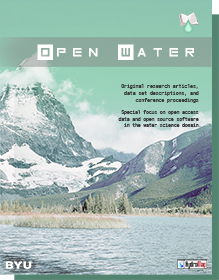Abstract
Climate and land cover change are very important issues in terms of global context and their responses to environmental and socio-economic drivers. The dynamic of these two factors is currently affecting the environment in unbalanced way including watershed hydrology. In this paper individual and combined impacts of climate change and land use land cover change on hydrological processes were evaluated through application of the model Soil and Water Assessment Tool (SWAT) in Gumara watershed, Upper Blue Nile basin Ethiopia. The regional climate; temperature and rainfall data of the past 40 years in the study area were prepared and changes were evaluated by using trend analysis applying Mann-Kendall trend test. The land use/cover data were obtained from land sat image and processed by ERDAS IMAGIN 2010 software. Three land use land cover data; 1973, 1986, and 2013 were prepared and these data were used for base map, model calibration and change study respectively. So as to evaluate the individual effects of climate change and land use/cover change on stream flow separately, we have simulated the flow by changing climate and LULC accordingly. The high flow of the catchment for these two decades was extracted in simulated flows and analyzed by using Annual Maximum (AM) model and the low flow was evaluated by seven day sustained low flow model. Both temperature and rainfall showed increasing trend; and then the extent of changes were evaluated in terms of monthly bases by using two decadal time periods; 1973-1982 was taken as baseline and 2004-2013 was used as change study. The trend test has also showed that there is increasing trend of observed stream flow of the catchment. The efficiency of the model was determined by Nash-Sutcliffe (NS) and Relative Volume error (RVe) and their values were 0.66 and 0.72% for calibration and 0.64 and 1.23% for validation respectively. The impact of climate change was higher than that of land use land cover change on stream flow of the catchment; the flow has been increasing by 16.86% and 7.25% due to climate and LULC change respectively, and the combined change effect accounted 22.13% flow increment. The overall results of the study indicated that Climate change is more responsible for high flow than low flow; and reversely the land use land cover change showed more significant effect on low flow than high flow of the catchment. From the result we conclude that the hydrology of the catchment has been altered because of changes of climate and land cover of the study area.
BYU ScholarsArchive Citation
Gismu, Gashaw
(2015)
"Evaluating the effect of climate change and land use/cover change on catchment hydrology of Gumara watershed, Upper Blue Nile basin, Ethiopia,"
Open Water Journal: Vol. 3:
Iss.
1, Article 18.
Available at:
https://scholarsarchive.byu.edu/openwater/vol3/iss1/18
